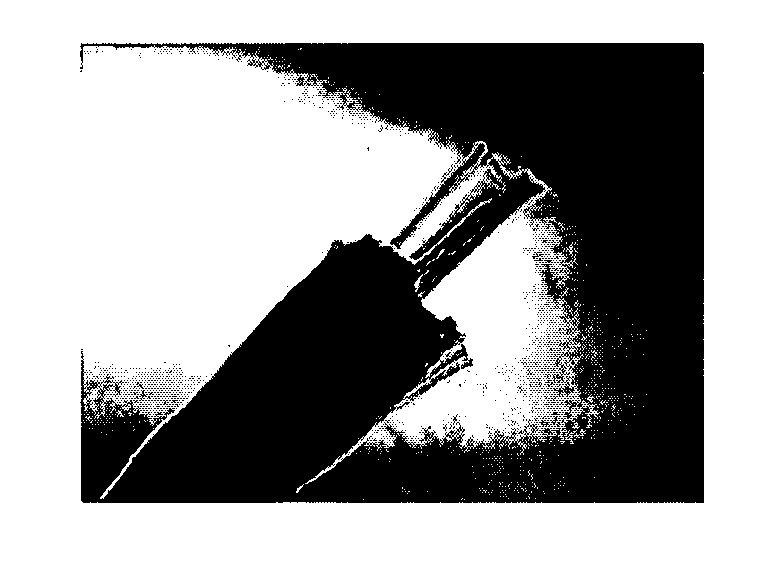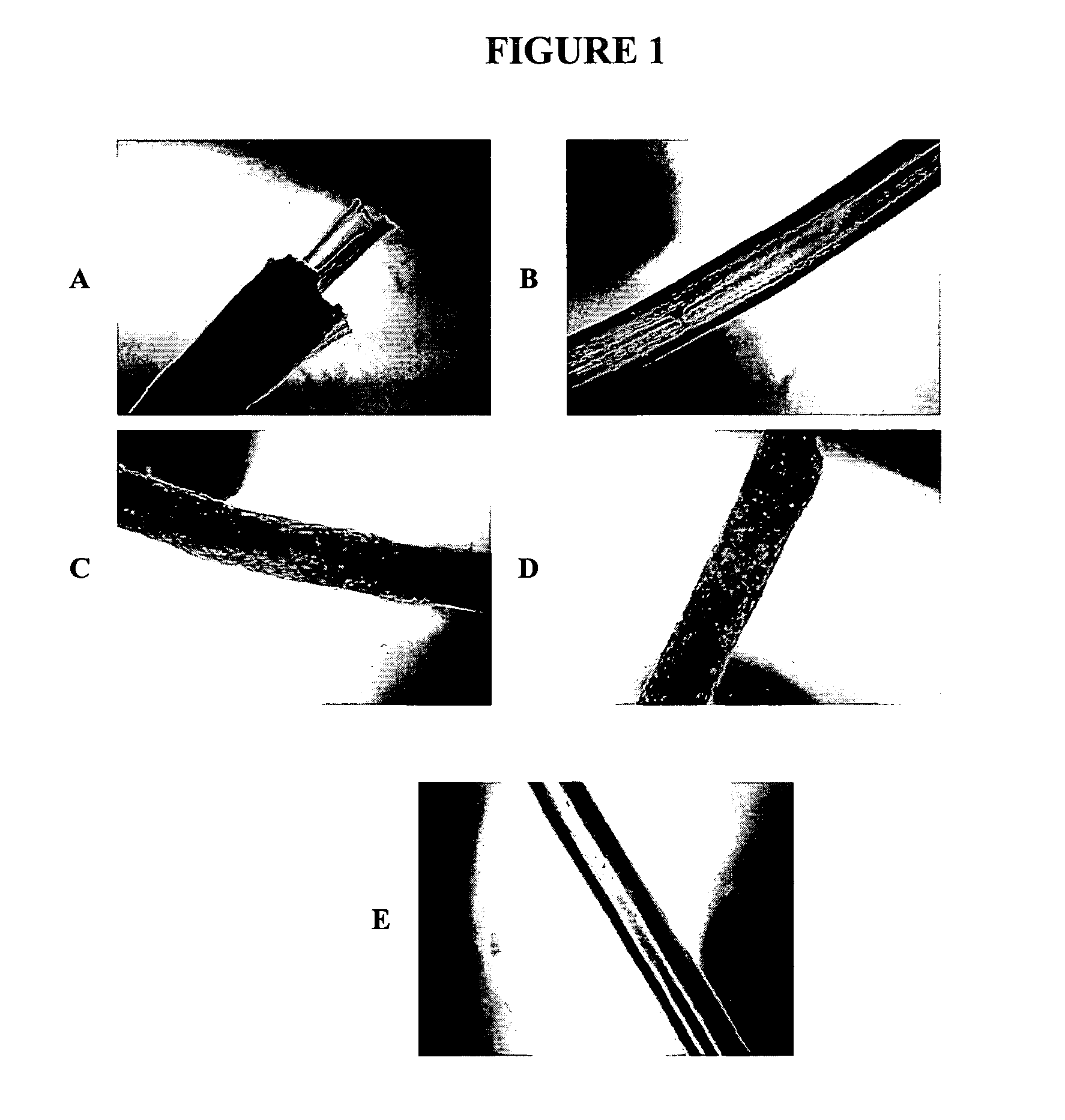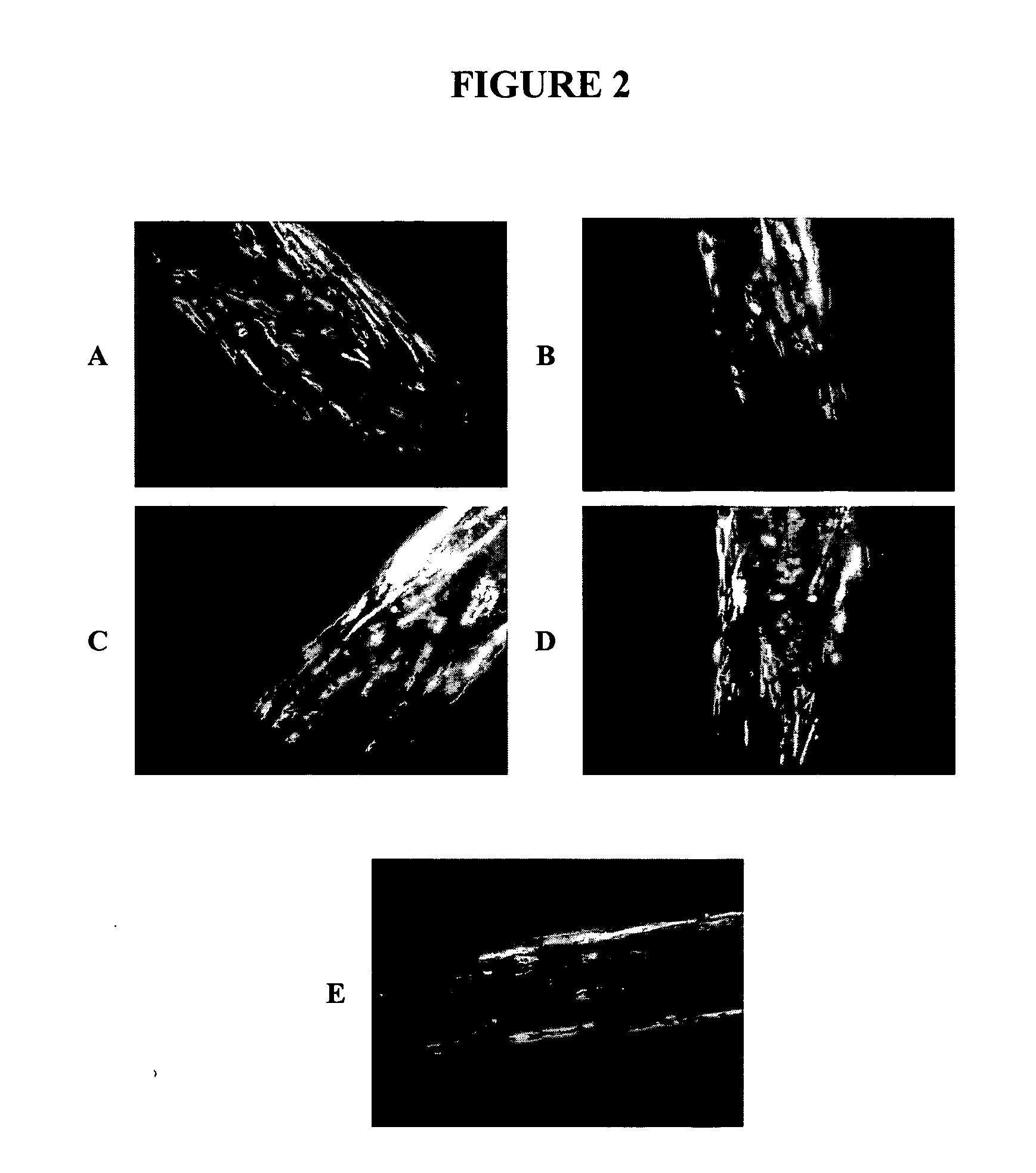Biomaterial for suturing
a technology of biomaterials and sutures, applied in the field of biomaterials for suction, can solve the problems of suture closure, particularly delicate sutures, and generating areas where fluids can escap
- Summary
- Abstract
- Description
- Claims
- Application Information
AI Technical Summary
Benefits of technology
Problems solved by technology
Method used
Image
Examples
example 1
Suturing Threads Coated with Adult Human Stem Cells from Adipose Tissue
[0064] The object of this experiment was to study the capacity of a certain type of cell to adhere to different types of suturing threads acting as the support material for the biomaterial for suturing of this invention.
[0065] 1.1. Materials
[0066] Five different types of suturing thread, all of the same thickness 3-0 (2 Ph.Eur.) were used, all synthetic (Table 1).
[0067] Adherent adult human lipo-derived stem cells (LDSC) were used as the cellular population for coating, after first being transduced with retrovial vectors that code for Cop-GFP, green fluorescent protein, used as a gene marker.
[0068] 1.1.1. Isolation of LDSC
[0069] The adipose tissue was obtained by liposuction. A cannula with a blunt end was introduced into the subcutaneous space through a small periumbilical incision (less than 0.5 cm in diameter). The suction was performed by moving the cannula along the adipose tissue compartment located u...
example 2
Use of the Biomaterial for Suturing for Intestinal Anastomosis
[0093] The object of this test was to determine the characteristics of the biomaterial for suturing provided by this invention and the advantages it offers compared to conventional sutures by performing colical anastomosis in rats.
[0094] After performing the anastomosis with the biomaterial for suturing of the invention and simultaneously with non-cell-coated threads used as a negative control, a series of parameters were determined to evaluate the status of the anastomotic lesion and compare the results obtained with both types of thread.
[0095] 2.1. Surgical Procedure
[0096] 2.1.1. Animals and Suturing Material
[0097] 12 adult BDIX rats with weights ranging between 130-260 grams were used in the experiment. Two to obtain the stem cells from the 4 rats from the subdermal adipose tissue and ten to study the colic sutures. The cell-coated threads were prepared following a protocol similar to that illustrated in example 1...
PUM
| Property | Measurement | Unit |
|---|---|---|
| size | aaaaa | aaaaa |
| diameter | aaaaa | aaaaa |
| concentration | aaaaa | aaaaa |
Abstract
Description
Claims
Application Information
 Login to View More
Login to View More - R&D
- Intellectual Property
- Life Sciences
- Materials
- Tech Scout
- Unparalleled Data Quality
- Higher Quality Content
- 60% Fewer Hallucinations
Browse by: Latest US Patents, China's latest patents, Technical Efficacy Thesaurus, Application Domain, Technology Topic, Popular Technical Reports.
© 2025 PatSnap. All rights reserved.Legal|Privacy policy|Modern Slavery Act Transparency Statement|Sitemap|About US| Contact US: help@patsnap.com



